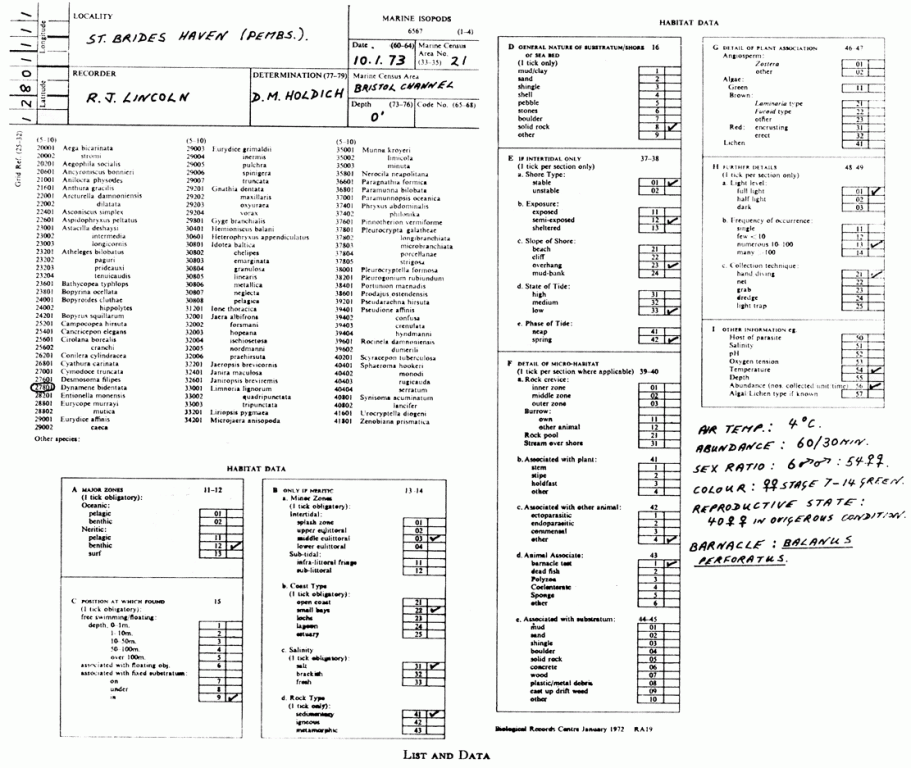Scheme Organiser: Warren Maguire
When the Isopod Recording Scheme was set up in 1968, it initially included marine as well as freshwater and terrestrial isopods. In 1970, the Marine Recording Scheme separated from the Non-marine Isopod Recording Scheme and operated for a number of years under the direction of David Holdich and Roger Lincoln (as detailed in Holdich & Lincoln, 1974). However, due to a lack of records and difficulty verifying the records of other observers, the scheme came to an end after a few years.
In 2020 the Marine Recording Scheme was resurrected by BMIG (Maguire, 2021). As a consequence of changes in technology, it is now possible for many records to be submitted and verified remotely, with photographs providing evidence of identification. The publication of Intertidal Marine Isopods (Naylor & Brandt, 2015) in particular enables identification of most intertidal species, though study of the sub-littoral species necessarily remains a specialist pursuit beyond the reach of most fieldworkers. Identification of intertidal marine isopods is of a difficulty similar to that of woodlice, centipedes and millipedes (see here for an explanation of the difficulty ratings given for each species), and most can be readily identified by a suitably informed fieldworker, though quite a few require examination under higher magnification. Good quality photographs/micrographs of the whole animal and of key characteristics are in most cases sufficient to confirm identification.
The scheme welcomes records for all species of marine isopod found around Britain and Ireland (see the list of species). Marine isopods are extremely under-recorded, so anyone submitting records will be contributing towards our understanding of the distribution and habitat preferences of these fascinating organisms. All records, even those for common species or those that don’t add new ‘dots’ to the maps, are valuable. The preferred means of record submission is via iRecord, though records may also be submitted by email to the scheme organiser. In order to enable verification and to enhance their value, records should be accompanied by photographs/micrographs (see the individual species accounts and the recommended literature for guidance on key identification features) and as much ecological information as possible. The scheme organiser is keen to establish an informal network of regular recorders across Britain (and Ireland too if possible) to target particular areas. If you are interested in being part of such a network, please do get in touch.
New contributors to the scheme are of course very welcome and support and guidance with collection, preservation of specimens and identification will be offered where required (BMIG's Facebook group Isopods and Myriapods of Britain and Ireland is an excellent place for advice too). Specimens may be sent to the scheme recorder for checking (email to arrange), but please do not send large collections of material, and ensure that specimens are sent in appropriate containers that will not be damaged or broken in the post.
- Holdich, D.M. & R. J. Lincoln (1974) The distribution and habitat preferences of British marine isopods: a survey scheme. Field Studies 4: 97-104.
- Naylor E. & A. Brandt (2015) Intertidal Marine Isopods. Synopsis of the British Fauna (New Series), No. 3. The Linnean Society of London: FSC.
Below is an example of one of the original recording cards from the 1970s:
